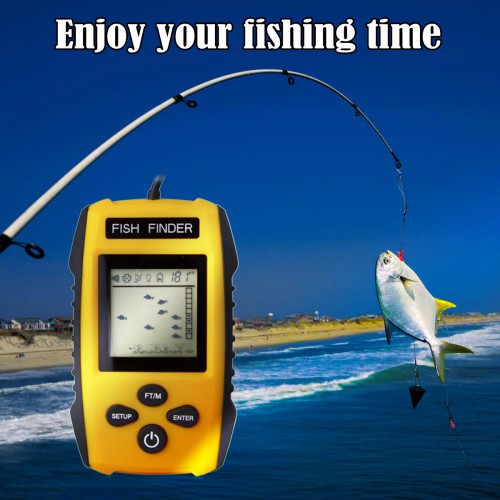Last updated on February 10th, 2024 at 10:18 am
Last updated on February 10th, 2024
You’ve got that fish finder but it is not enough. Now you need to know how to use this, right? Well, don’t worry as we got you covered. In this article, you are going to know exactly how to use a fish finder whether you are a beginner or a pro.
We made sure that we go into great details including a step by step solution along with an infographic so there’s no stone unturned for sure. Let’s get started.
Share this Image On Your Site
Get to Know It
Do not worry about damaging one part or the other. That will never happen. Take your time in knowing all the options and the capacity of your fish finder by trying to understand what it can and what it can’t do. You have to make sure that you are making it a perfect combo when it comes to the chart plotter, right?
If you cannot make meaning out of the fish finder, then there is no point going into the sea and trying to get a fish. You will feel weird about it.
In general, fish finders do come with tutorials and solutions. Especially, if you have bought an expensive version or at least a good/popular model, you will have enough information to get started. Even if you do not get anything with the package, you can always go to Google, right?
Zooming
Zooming is possibly one of the biggest arts of fish finding. Zooming will tell you exactly where you can find those fishes and that’s why it is crucial that you can zoom in properly. How to make that happen? Well, practice is the first option. When you are practicing, try to learn the art of zooming at the bottom area more than anything as it will tell you about the whole fishing area.
The sonar wave might look different based on a lot of factors so if you are unsure about a certain thing, don’t worry. Another great tip is that you should always use the full-screen mode to get the whole picture. This is a basic mistake that many of us make. That’s understandable though as we are always on our mobile and we think that it is good enough for the fish finder too to be in that mini-screen stage.
Tuning
The next task for you would be tuning and you can thank yourself for getting into fish-finding machines this year or in the future. The fish finder units are now smart enough to auto-tune everything for yourself and you can blindly trust the technology. We haven’t heard of a case where the auto-tuning failed and someone has missed a big opportunity.
However, there are scenarios when the auto-tuning will not work perfectly or as well as expected and those are the times when you need to dive deep. Especially, if you are in turbid water then it would not be wise to trust the auto-tuning features. Make sure that you are doing it manually in that case.
Here’s a pro tip for you in case you need one. Do not ever try to boost or add filters so that you can reduce the surface clutter. I know, right? Many do this and this comes naturally to them. The problem is that you will end up cutting down the overall sensitivity of the finder and it will harm the end goal.
Also, this makes logical sense if you think about it. There are not a lot of big fishes out there who will try swimming exactly under your boat. They are not that stupid so it is not likely that you will lose a lot of benefits.
Location
The last thing that you need to be careful about is the location. Even after doing all the things above, if you do not get a good result then the reason can only be one thing. It is your location. You have to make sure that the location settings are done right. For example, if you are using a transom mount type transducer, you have to change the whole location completely before you focus on anything else.
Also, think about the turbulence and movement created by your boat as that affects the overall result too.
Hopefully, if you do these things right, you should not expect to have any problems with finding fish no matter which fish finder you use. We should also mention this before you finish reading this article. You see, a lot of people think that they are not getting their desired result because of the fish finder unit that they are using. Yes, we are not ignoring the fact that it can’t happen but almost in all cases, this is not the scenario.
You should keep that in mind too when you are fishing. If you are not getting your desired results, it is time to check all these points and restructure the whole setup. You will soon start catching big ones.






